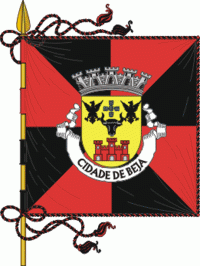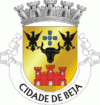Beja (Beja)
 |
 |
The municipality is the capital of the Beja District. The present Mayor is Paulo Arsénio, elected by the Socialist Party with an absolute majority in the 2017 Portuguese Local Elections. The municipal holiday is Ascension Day. The Portuguese Air Force has an airbase in the area – the Air Base No. 11.
Situated on a 277 m hill, commanding a strategic position over the vast plains of the Baixo Alentejo, Beja was already an important place in antiquity. Already inhabited in Celtic times, the town was later named Pax Julia by Julius Caesar in 48 BCE, when he made peace with the Lusitanians. He raised the town to be the capital of the southernmost province of Lusitania (Santarém and Braga were the other capitals of the conventi). During the reign of emperor Augustus the thriving town became Pax Augusta. It was already then a strategic road junction.
When the Visigoths took over the region, they called the town Paca (a direct derivation or shortening of the Latin Pax or Pace-Augusta) which then became the seat of a bishopric. Saint Aprígio (died in 530) became the first Visigothic bishop of Paca. The town fell to the invading Umayyad army in 713. Paca, was then adapted to Arabic Baja (باجة there's no sound for "p" in Arabic), and eventually became Beja.
Starting in 910 there were successive attempts of conquest and reconquest by the Christian kings. With the collapse of the Umayyad Caliphate of Córdoba in 1031, Beja became a taifa, an independent Muslim-ruled principality. In 1144 the governor of Beja, Sidray ibn Wazir, helped the rebellion of the Murīdūn (disciples) led by Abul-Qasim Ahmad ibn al-Husayn al-Quasi in the Algarve against power of Seville. In 1150 the town was captured by an army of the Almohads, who annexed it to their North African empire. It was retaken in 1162 by Fernão Gonçalves, leading the army of the Portuguese king Afonso I. It must have been abandoned by the Portuguese because in 1172 Gerald the Mercenary captured the town from the Muslims and before departing from it the medieval Arab city was reduced to rubble and left desolate. In 1175 Beja was recaptured again by the Almohads. It stayed under Muslim rule till 1234 when king Sancho II finally recaptured the town from the Moors.
All these wars depopulated the town and gradually reduced it to rubble. Only with Manuel I in 1521 did Beja again reach the status of city. It was attacked and occupied by the Portuguese and the Spanish armies during the Portuguese Restoration War (1640–1667).
Beja became again the head of a bishopric in 1770, more than a thousand years after the fall of the Visigothic city. In 1808 Napoleonic troops under General Junot sacked the city and massacred the inhabitants.
Map - Beja (Beja)
Map
Country - Portugal
 |
 |
| Flag of Portugal | |
One of the oldest countries in Europe, its territory has been continuously settled, invaded and fought over since prehistoric times. The territory was first inhabited by pre-Roman and Celtic peoples who had contact with Phoenicians, ancient Greeks and Carthaginians. It was later ruled by the Romans, followed by the invasions of Germanic peoples and the Islamic invasion by the Moors, whose rule was eventually expelled during the Reconquista. Founded first as a county of the Kingdom of León in 868, gained its independence as the Kingdom of Portugal with the Treaty of Zamora in 1143.
Currency / Language
| ISO | Currency | Symbol | Significant figures |
|---|---|---|---|
| EUR | Euro | € | 2 |
| ISO | Language |
|---|---|
| PT | Portuguese language |















